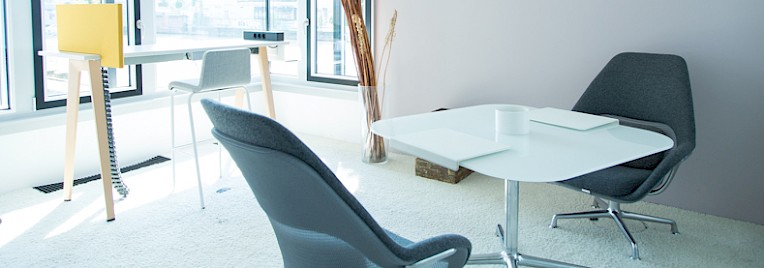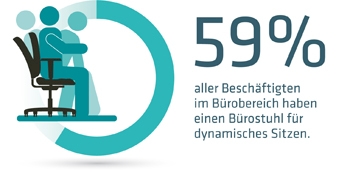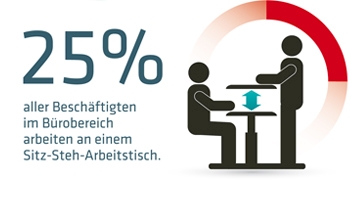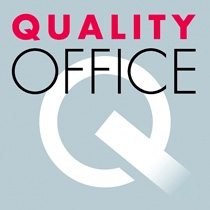
Furniture – the basics of every room design
What comes to mind first when you think of your office workplace? After your colleagues, it’s probably the furniture. It plays a major role in the way we work.
Seating
Office work is mainly done while seated. As a result, ergonomically correct seating plays a key role in maintaining good health. A good office chair must permit various seating positions and support the body well in every position.

Just over half of office workers are likely to have ergonomic seating. For all other workplaces, there is an urgent need to remedy the situation.
Source: IBA/bso study 2015
Work tables
No other piece of furniture has a greater impact on an office workplace than the work table. The important factors here are stability, a sufficiently wide workspace and the correct adjustment to the user’s height. Desks that can be used either sitting or standing are effective in both ergonomic and economic terms.
The share of workplaces that are equipped with sitting/standing tables is increasing. Today half of all newly bought desks are in this category.
Source: IBA/bso study 2015

Cabinets, containers and room dividers
The low-paper office is changing our requirements for cabinets. They are not becoming useless — on the contrary. In modern offices, storage furniture is taking on new functions. Cabinets can be room dividers, sound absorbers, meeting points and more. At the same time, new types of products are evolving, including pharmacists’ cabinets, modular shelving and furniture on rollers. All in all, cabinets, containers and room dividers are becoming very interesting design elements for modern office spaces.

When you’re selecting office furniture, a good orientation guideline is the Quality Office seal. It encompasses requirements regarding
- safety;
- functionality;
- flexible product use;
- durability;
- and product sustainability.

